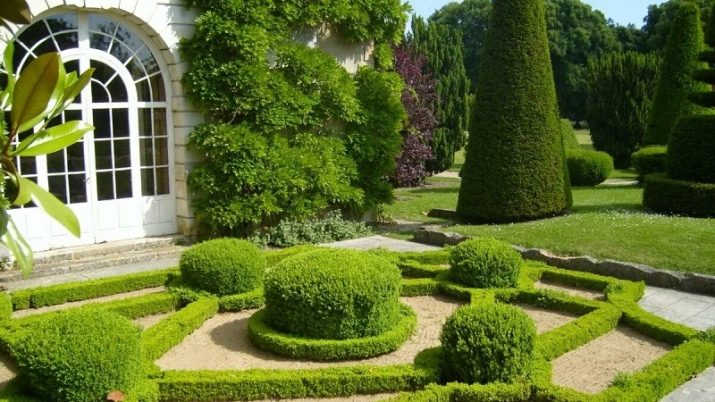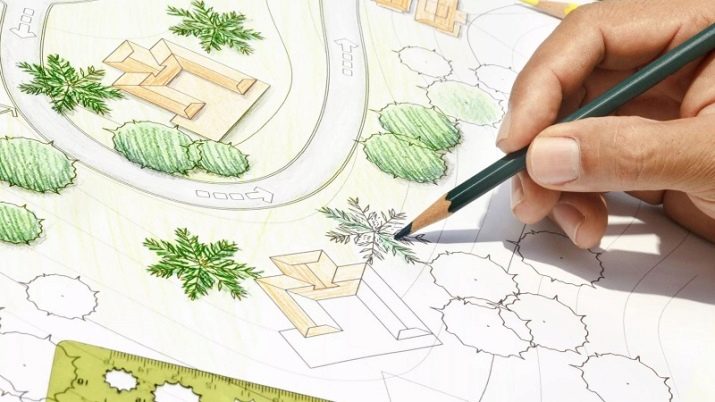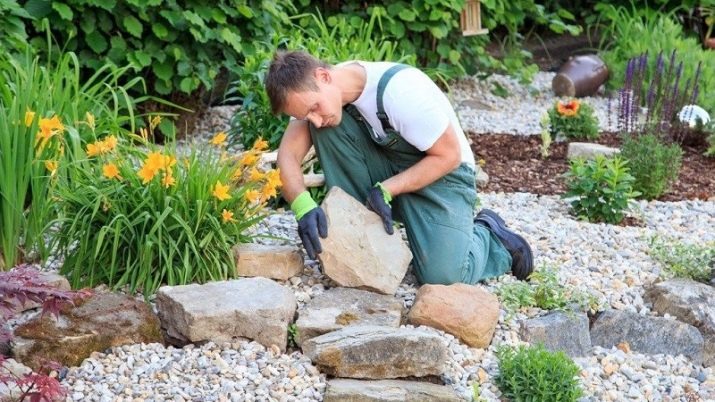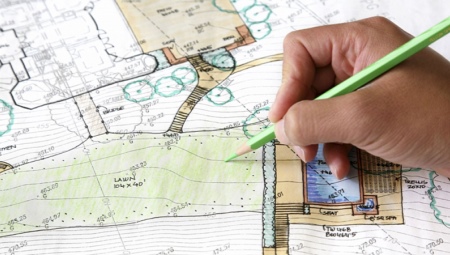The profession of landscape design is the dream of many creative people. The ability to realize your own ideas, work for yourself and be in constant contact with nature are the main reasons for the popularity of this vacancy.

Features
The landscape designer is an employee whose main responsibilities are the design and refinement of gardens, parks and adjoining territories. The description of this profession suggests that the specialist’s task is not only to create an aesthetic picture, but also to organize comfortable places to relax and hide unsightly areas of the landscape. Despite the fact that the landscape designer is not a gardener or a botanist, his profession is still partially connected with biology. He must understand how crops planted in the form of seedlings will change over time, take into account the rules for combining plants and the conditions of their maintenance. Besides, the resulting object must be in harmony with the surrounding nature, which means, again, it is important to understand how it changes throughout the year.
The landscape designer draws up this or that territory, using plants, the existing natural landscape, buildings and various street accessories. Work on a project necessarily begins with creating a plan with thoughtful planting. In order for the plot not to look neglected, the composition must be balanced, but absolute symmetry still looks unnatural. Although many designers work as individual entrepreneurs, You can find such a specialist in design studios, as well as in some construction companies.
If you familiarize yourself with interesting historical facts related to the above profession, you can find out that earlier landscape design was an offshoot of gardening and was accessible only to high nobles. Nevertheless, in the 20th century, the direction began to spread among the general population.

Advantages and disadvantages
The profession of a landscape designer is currently in great demand, and therefore it is not surprising that the number of its advantages is quite noticeable. Due to the high demand, the specialist does not have any problems with employment - You can find a job in a construction company, in an architecture studio, or in an organization engaged in design. Of course, you can work as an individual entrepreneur, attracting new customers through social networks and by word of mouth. The work of a landscape designer is well paid. Despite the fact that newcomers most often start with a salary equal to 25 thousand rubles, it can soon rise to 60 thousand. And qualified specialists with a good portfolio earn from 300,000 rubles per order.
Of course, the big advantage is the opportunity to work for yourself, engaged in creative activities. In this case, the landscape designer can adjust not only the number of orders, but also his schedule. It is possible to hire assistants if necessary. The disadvantage of the profession is certain difficulties at the beginning of a career. A person who has just graduated from a university is forced to compete with already experienced specialists. However, with a great desire, this minus can be processed into a plus: while still studying, work as an assistant or a volunteer on certain projects, as well as form a portfolio, even from unpaid orders.
Another drawback is the seasonality of work, since in winter a very small number of people require the services of a landscape designer. For some, the minus will also be the need to do dirty work, for example, arranging flower beds or alpine hills.

Responsibilities
The job of a landscape designer is to perform numerous tasks. It all starts, of course, with negotiations with the customer and identifying his desires. Next, the specialist should deal with the existing landscape, that is, determine the size of the territory, the type of soil, the proximity of the location of groundwater, the presence of water bodies, the specifics of the relief, climate and other features. The next step is creation of a garden project, and the design of all available buildings on the site is also necessarily taken into account. After the development of the necessary communication systems, for example, drainage, begins direct landscaping of the site. At the end of the workflow, installation of lamps and decorative elements.
In fact, a landscape designer should be able to do everything - from the creation of a beautiful picture to its implementation in accordance with engineering requirements. As for communications, it is important to note that the specialist will have to develop a water supply system, sewage and stormwater, as well as include drainage and sumps in the design project. If the customer wishes to additionally create a reservoir on the site, the employee must cope with this. Of course, it is he who paves the paths and paths, directs the planting of trees, flowers and shrubs, and also thinks out the irrigation system.
By the way, quite often all these tasks are carried out simultaneously on several projects.

Qualities and Skills
The main quality that a landscape designer should have is, of course, creative thinking. Without it, it is simply impossible to create a unique design project that will satisfy the customer, but at the same time take into account all the features of the existing site.In order to think creatively, of course, you will need to develop imagination and instill a sense of beauty. However, to realize large-scale ideas, imagination alone will not be enough - a specialist will need qualities such as perseverance, hard work, patience and attention to detail. As in almost any job, for a landscape designer, communication skills are important, as it is necessary to find a common language with any customer.
As already mentioned above, knowledge of botany will also be useful, so that a beautiful picture of flowers and plants is also viable. Help a specialist knowledge of special programs for creating design projects, as well as the ability to draw. The profession of a landscape designer is ideal for purposeful people who are not standing in one place and constantly developing. They must have a good memory in order to be able not to miss a single aspect in creating a design project, to be good organizers. Also important the ability to clearly convey their ideas to builders and gardeners and to manage their work throughout the entire term.
And, of course, we must not forget such an important quality as stress resistance. Working as a landscape designer involves a fairly frequent interaction with people and the influence of the human factor, which should always be prepared for. As for the diverse knowledge and skills, the landscape designer must understand architecture and plants, understand the principles of landscape construction, navigate the cost and order of work, think figuratively, work in AutoCAD and Archicad programs, and also keep up with current trends.

Directions
Modern landscape design is usually divided into 3 main areas.
- Engineering Engineering includes architecture, construction and preliminary design. Knowledge in this area will allow the landscape designer to correctly design the lighting system and communications. By the way, it was he who would need to create storm systems that discharged wastewater, as well as develop additional facilities.
- Biological Biological direction combines botany and crop production. It is important for a specialist designing a personal plot to understand the combination of individual plants, as well as know the features of their development and flowering. Some crops may even require special soil mixtures.
- Historical. Finally, there is also a historical direction, which includes the history of culture and philosophy. This information will allow you to harmoniously combine existing buildings on the site with the landscape design, as well as effectively emphasize the features of the landscape.

Training
In principle, you can study at a landscape designer at many institutes throughout Russia. Some educational institutions (for example, MASPK) even provide the opportunity to take professional retraining courses remotely. I must say that a future specialist can get basic education in the adjacent direction, and then you have to sign up for specialized courses.
Initially, you should focus on specialties such as “Landscape architecture”, “Ornamental gardening and phytodesign”, “Meadow landscapes and lawns”, “Landscape gardening and landscape construction”, or “Landscape design” itself. As a rule, you have to take such subjects as mathematics, biology or geography, as well as the Russian language.
Of the educational institutions for applicants, Moscow State University of Forests, the Interregional Academy of Industrial and Construction Complex, and the Moscow Agricultural Academy are most often recommended. K. A. Timiryazev and St. Petersburg State University of Technology and Design.
The salary
A landscape designer without experience is unlikely to earn more than 28 thousand rubles, and an assistant designer who combines study and practice will receive even less. In principle, in Russia the level of wages is from 30 thousand to 120 thousand rubles. In Moscow, this indicator is slightly higher - the boundaries of the income of landscape designers range from 40 thousand to 130 thousand rubles.
The higher the qualification of the designer and the broader his portfolio, the more he can rely on.











